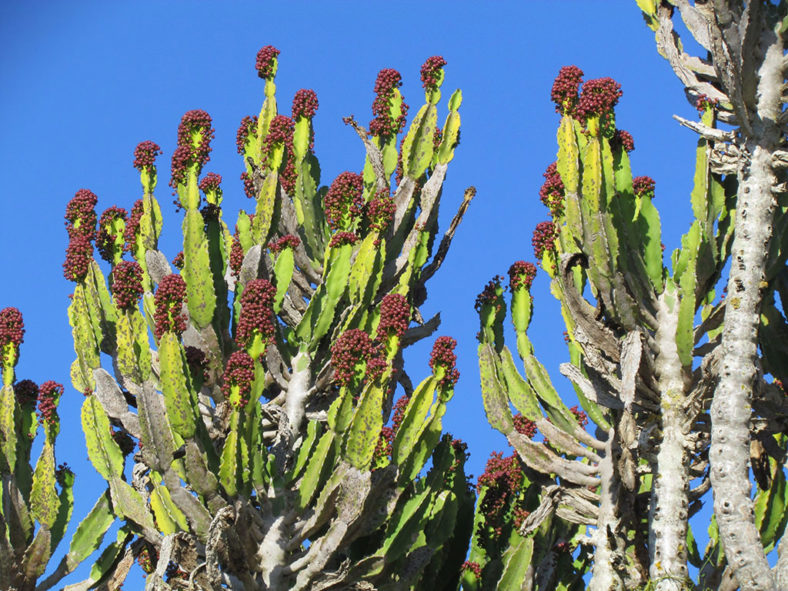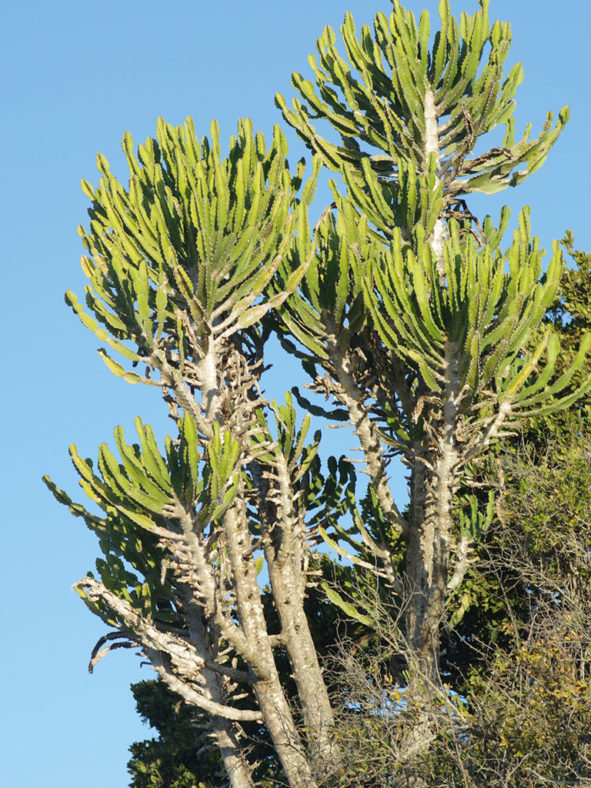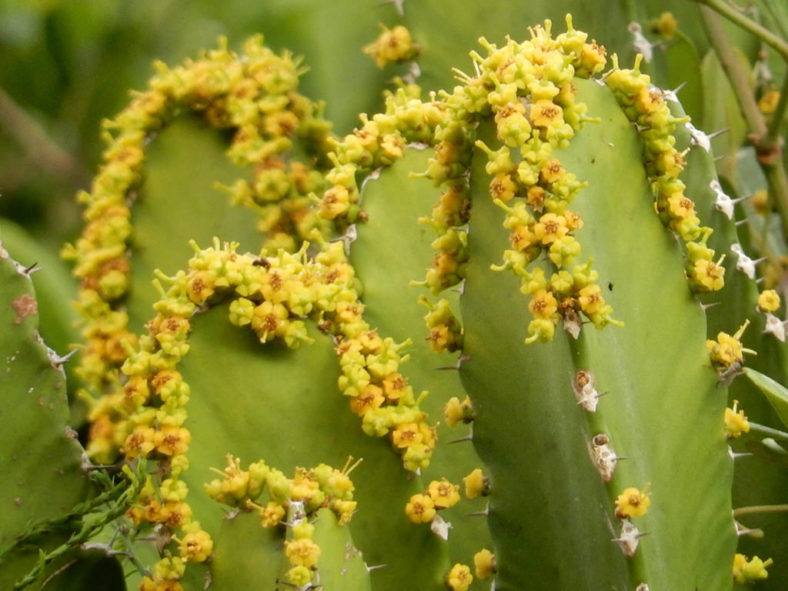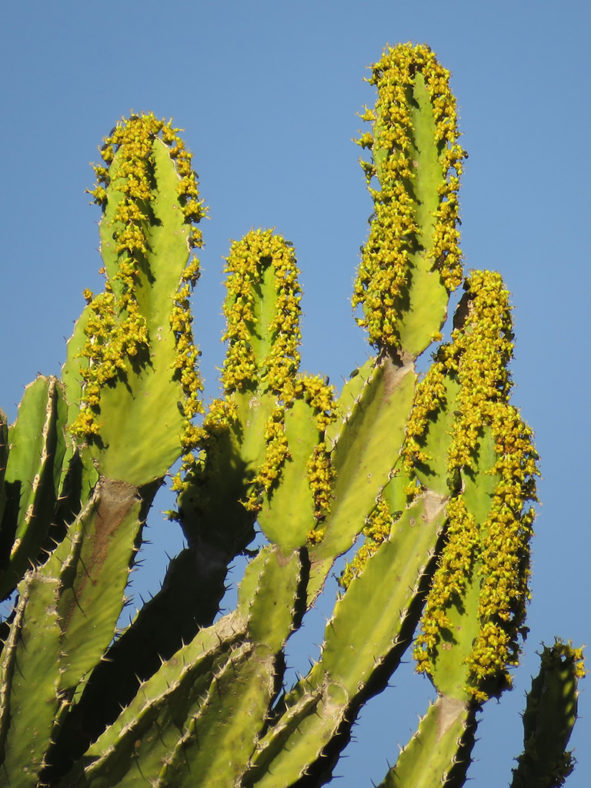Scientific Name
Euphorbia triangularis Desf. ex A.Berger
Common Name(s)
Chandelier Tree, River Euphorbia, Tree Euphorbia
Scientific Classification
Family: Euphorbiaceae
Subfamily: Euphorbioideae
Tribe: Euphorbieae
Subtribe: Euphorbiinae
Genus: Euphorbia
Etymology
The specific epithet "triangularis (try-an-gew-LAIR-iss)" means "triangular" and refers to the ends of stems that are triangular in the cross-section.
Origin
Euphorbia triangularis is native to South Africa (Eastern Cape, KwaZulu-Natal, and Mpumalanga), Swaziland, and southern Mozambique. It grows in arid areas on rocky hillsides and steep slopes of river valleys, often just above coastal rivers.
Description
Euphorbia triangularis is a succulent tree with one or several cylindrical trunks and a crown of ascending, 3- to 5-angled branches. It can grow up to 60 feet (18 m) tall. The branches are light green to yellowish-green and constricted into segments, each up to 1 foot (30 cm) long. They are deciduous with age, leaving the stems naked, and can measure up to 5 feet (1.5 m) long and 4 inches (10 cm) in diameter. The spines are produced in pairs on usually separate shields along the margins.
The flowers occur in a head called the cyathium. They are greenish-yellow and appear in clusters of 2 or 3 just above the spines in winter. The fruits are red 3-lobed capsules.

How to Grow and Care for Euphorbia triangularis
Light: This succulent is a sun lover. Place your indoor E. triangularis in a sunny window. You may place the pot on the balcony or in the garden from spring to fall. Increase sun exposure gradually to prevent sunburn.
Soil: E. triangularis requires well-drained soil. Use a commercial mixture formulated for succulents, or make your own potting mix.
Hardiness: High summer temperatures are not a problem, but low winter temperatures can damage or kill your plant. E. triangularis can withstand temperatures as low as 25 to 50 °F (-3.9 to 10 °C), USDA hardiness zones 10a to 11b.
Watering: From spring to fall, water when the top inch (2.5 cm) of soil feels dry. Reduce watering in winter. Give it just enough water to prevent wilting. The best time of the day to water your E. triangularis in the warm season is the evening.
Fertilizing: Plants in a pot need regular feeding. Apply a balanced fertilizer in a 10-10-10 NPK formulation, diluted to 1/4 strength weekly during the growing season.
Repotting: E. triangularis will benefit from repotting but does not need to be repotted yearly. When your plant is outgrowing its pot, it is time to repot it in a larger pot and give it a fresh potting mix. The repotting is best done in early spring, at the beginning of the growing season. Wear gloves, protective clothing, and appropriate eye protection when repotting this succulent.
Propagation: The easiest and fastest method of propagation for this plant is by using cuttings. It can also be grown from seeds, but it can be difficult to germinate and even hard to find. The best time to take cuttings is in spring or summer. Sow the seeds in spring.
Learn more at How to Grow and Care for Euphorbia.
Toxicity of Euphorbia triangularis
E. triangularis produces a toxic, white, milky sap that can irritate the skin and eyes. Therefore, keeping this plant away from children and pets is best.
Links
- Back to genus Euphorbia
- Succupedia: Browse succulents by Scientific Name, Common Name, Genus, Family, USDA Hardiness Zone, Origin, or cacti by Genus
Photo Gallery
Click on a photo to see a larger version.


